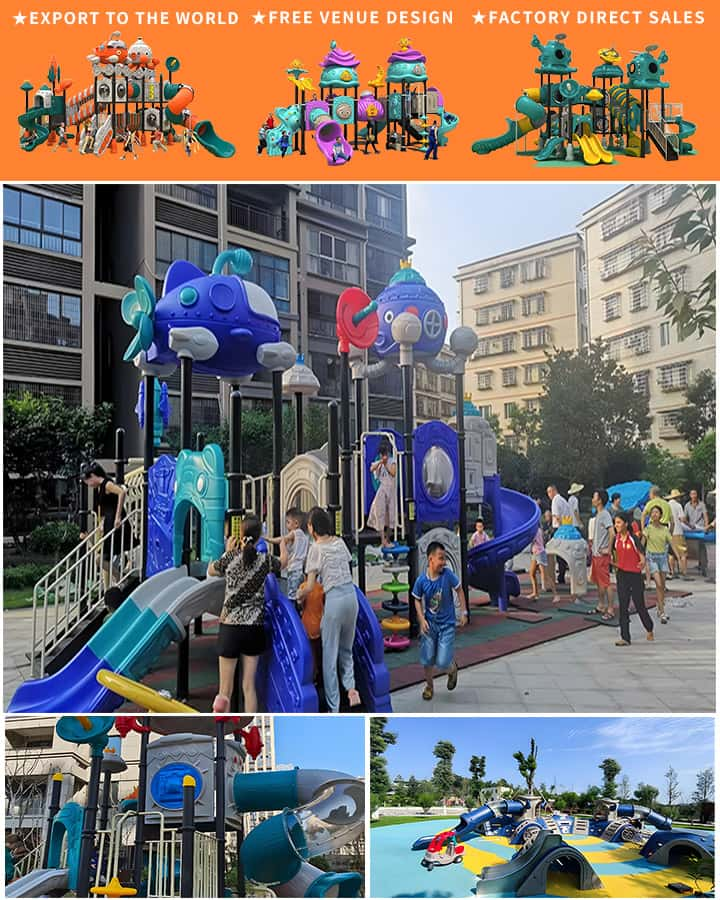Outdoor playgrounds are an essential part of childhood, offering a space where kids can explore, learn, and develop essential skills. The benefits of outdoor play are numerous, ranging from physical fitness to social interaction. Whether you’re a parent looking for the perfect playground or someone interested in designing one, this guide will provide all the information you need about outdoor playgrounds for kids.
Importance of Outdoor Playgrounds
Physical Development: Outdoor playgrounds encourage physical activity, which is crucial for a child’s overall development. Activities such as climbing, running, and jumping help improve coordination, balance, and strength. These elements are particularly beneficial during formative years when children build the foundational motor skills needed for more complex movements.
Social Skills: Playing outdoors with other children helps kids develop essential social skills. They learn to share, take turns, and collaborate, fostering important interpersonal skills. Interaction with peers also aids in emotional development, teaching empathy, cooperation, and conflict resolution.
Mental Health: Spending time outside can significantly impact a child’s mental health. Exposure to natural light and fresh air boosts mood and reduces stress levels. Outdoor play stimulates creativity, encouraging imaginative games that can reduce anxiety and foster a sense of well-being.
Designing an Ideal Outdoor Playground

Safety First: Safety is paramount when designing playgrounds for children. Ensure that all equipment is age-appropriate and meets safety standards. Install soft landing surfaces like rubber mats or sand to cushion falls, and regularly inspect the playground for any hazards.
Variety of Equipment: An ideal playground should offer a variety of equipment to cater to different interests and abilities. Consider including swings, slides, climbing frames, seesaws, and balance beams. This diversity keeps playtime engaging and helps develop a range of physical skills.
Accessibility: Make sure the playground is accessible to all children, including those with disabilities. Incorporate ramps instead of stairs, install sensory-rich play areas, and ensure there is enough space for maneuverability around the playground.
Natural Elements: Incorporating natural elements like grass, trees, and water features can enhance the play experience. Natural surroundings offer additional opportunities for exploration and learning about the environment. Ensure these features are safe and appropriately maintained.
Best Practices for Using Outdoor Playgrounds
Supervision: Always supervise young children while they play. Adult supervision ensures that the kids are playing safely and helps address any issues that may arise promptly.
Teach Safety Rules: Educating children on safety rules is vital. Teach them how to use each piece of equipment correctly and remind them of basic safety practices, like not pushing others on the swings and keeping hands and feet inside the boundaries of the equipment.
Cleanliness: Keep the playground clean and free from litter. Regular cleaning prevents the spread of germs and keeps the area pleasant for everyone. Teach children the importance of picking up after themselves and disposing of waste properly.
Weather Considerations: Check the weather forecast before heading out. Extremely hot, cold, or wet conditions can be uncomfortable and unsafe for outdoor play. Dress children appropriately for the weather and have sunscreen available on sunny days.
Conclusion
Outdoor playgrounds are more than just fun spaces; they are vital environments for nurturing physical, social, and mental growth in children. By understanding the importance of these areas and following best practices, we can create safe, enriching experiences that benefit kids for years to come. So, let your children step outside, breathe in the fresh air, and let their imaginations run wild in the great outdoors.




